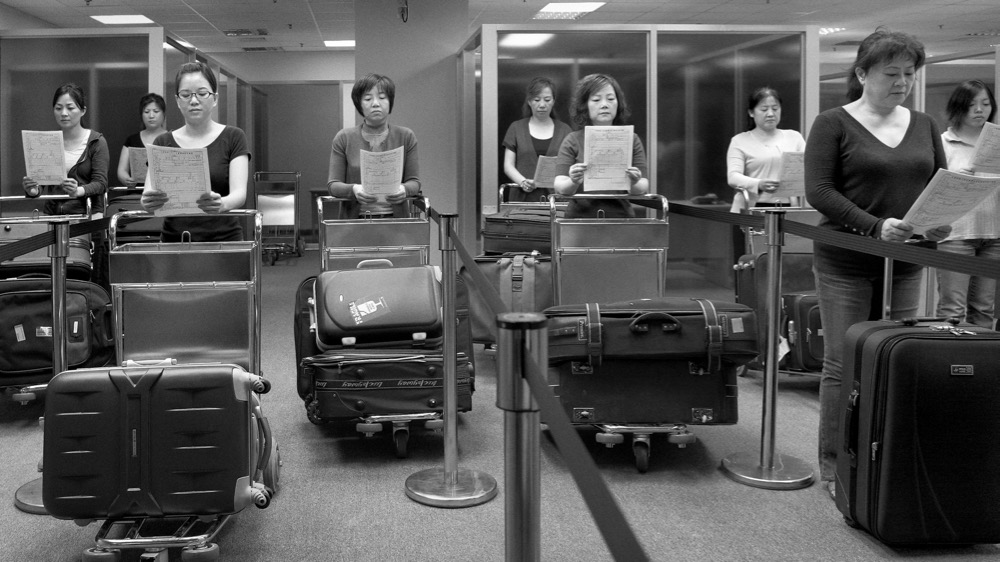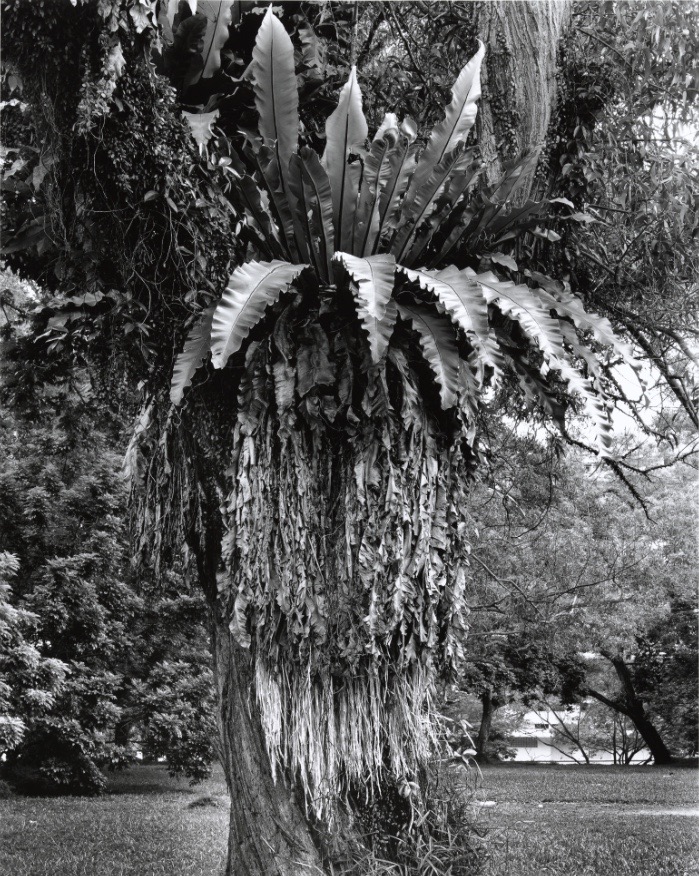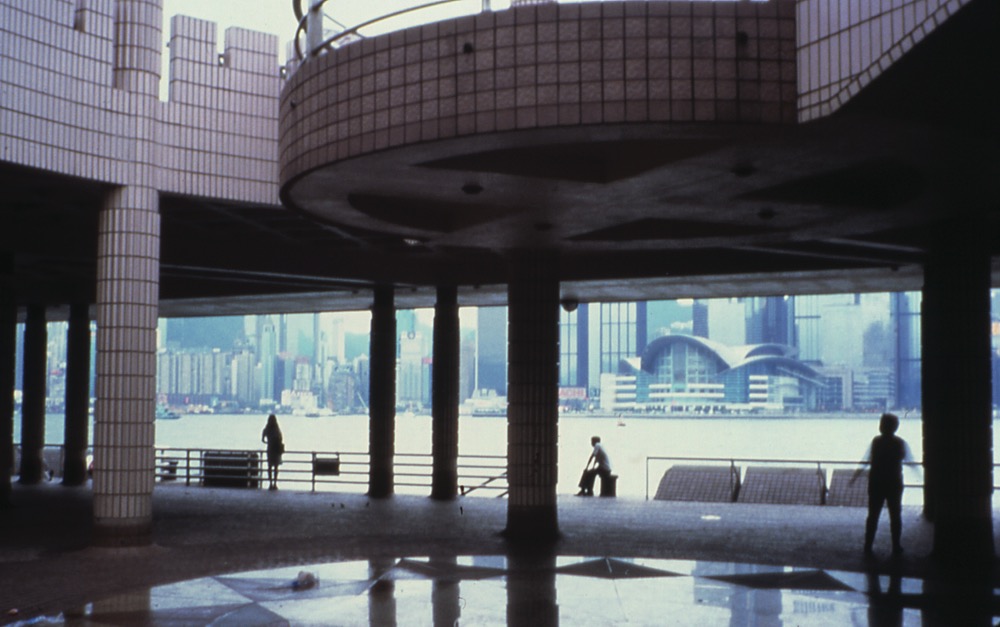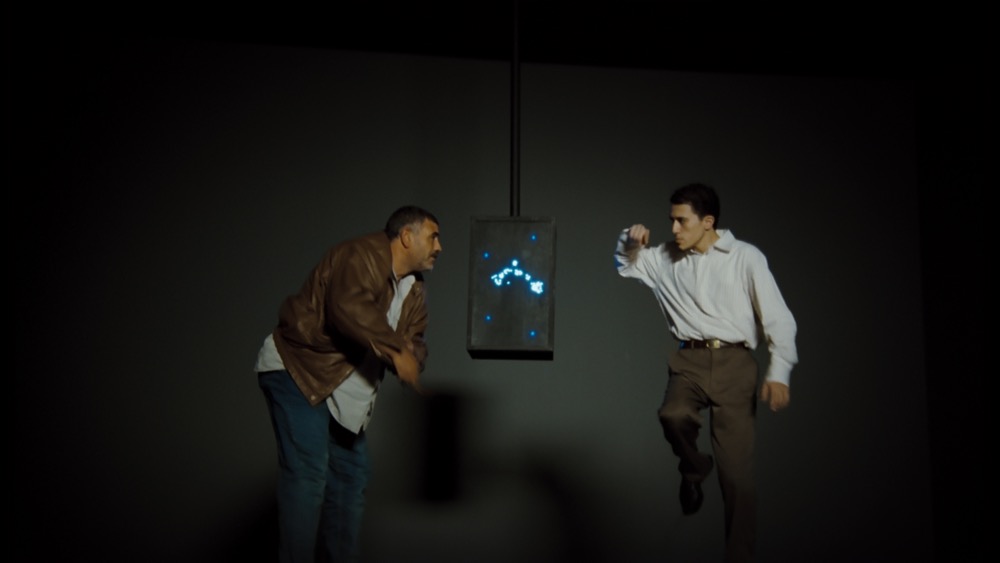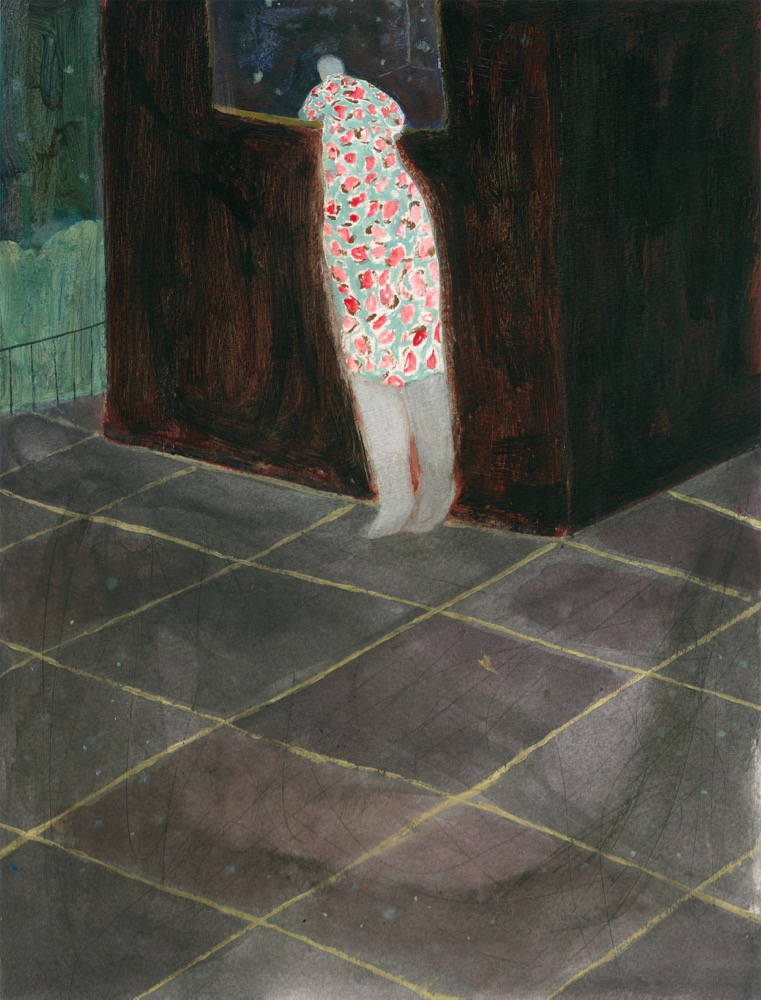Moving images
In a busy and eclectic area of Hong Kong, on the 17th floor of a commercial building, a not-for-profit space for art and performance was opened in 2014: Midtown Pop. For the conservative mind, the association of different forms of business or living with art can seem uncanny. But within the expanding space production in Hong Kong, such a place punctuates the provisions for the future.
Just a few days before the commencement of Art Basel Hong Kong, M+ Museum opened an exhibition that translates an important principle of how our society functions today – MOVING – acknowledging key aspects of borders, mobility, migration and transition. The mobile aspect of this conceptual enterprise is immediate, as the building of M+ Museum is under construction, and a series of nomadic projects have been developed in the last four years, aiming to test and slowly introduce the museum into the daily economy of Hong Kong. It all comes together in a logical association regarding the functionality of the institution and its scope – the mobile museum and the moving image. Cinematography played an important part in the curatorial demonstration, referencing the highly acclaimed film production set in Hong Kong and its special aesthetics. It was a vulnerable opening scene taking place in and outside a noodle shop from the film Floating Life, directed by Clara Law and released in 1996, that the curator had used as a “Madeleine” to discuss the mixture of feelings in a migrant’s life: nostalgia, fear of displacement and the uncontrolled switch between public and private.
By connecting all these elements, the exhibition Moving Images transposed the beholder in a complex visual experience. The setting of the video works was molecular – not too many extra walls, not too much darkness or unwanted headphones – and each art work had a well-defined position in the space, building the context for the next work the viewer would discover. Because of this rhythm, that was almost like a musical score, the visitor was naturally moving in the space of the exhibition. It is quite hard to find an exhibition where one can freely move and compose a specific relation with the space. Maximum attention was given to the labels, which were actually tiny light-boxes generating small doses of light.
Several of the works in the exhibition were discussing “the right to the city” (concept introduced by Henri Lefevre in his book Le Droit à la ville (1968), meaning the initiative of the individual to change and improve urban life, and shape it in a way that it serves the common welfare) together with the transformations Hong Kong has experienced in its modern history. The relationship with the water and the transient population was accurately constructed in Dominique Gonzales-Foerster’s video piece, Central (2001), filmed on super 8 and 35 mm film. Central is a melancholic filmic portrait of Hong Kong, focused on the people passing by Victoria Harbour, carrying their memories and expectations in a silent tour. The narrator mediated the sensitive actions in the film, inviting the observer to compare Hong Kong in 2001 with Hong Kong in 2015.
The photographs depicting spectacular botanical formations, part of a series realized by Simryn Gill and entitled Forest (1996 – 1998) pointed out the colonial history of South East Asia, bringing out questions of memory and oblivion, of seeing and not being seen. The quality of the silver gelatin print was deepened by the artist through the use of strips of text that were attached to the photograph, codifying the image.
The intensity of a re-imagined dancing scene from a night on the streets of Cairo re-edited by the artist Hassan Khan in the video Jewel (2010) combined with the placid movement in Chen Chieh-jen’s piece Empire’s Borders I (2008 – 2009), which discussed the discriminatory treatment encountered by Taiwanese and Chinese migrants triggered various visual diagrams revolving around the critical phenomenology of migration and identitary transformation.
The project unfolded as a room in a room in a room, in a way celebrating the infinite possibilities of video art and film, and on the other side creating a blueprint of an exhibition that has kept on creating itself and becoming independent. Starry Starry Room (2012), the painting of the young Hong Kong artist Firenze Lai, can serve as a synthesis of this “moving visuality”.
Mobile M+: Moving Images, (CAMP, Paul Chan, Chen Chieh-jen, David Diao, Estudio Teddy Cruz, Simryn Gill, Dominique Gonzalez-Foerster, Isaac Julien, Kan Xuan, William Kentridge, Hassan Khan, Firenze Lai, Li Ran, Charles Lim, Anson Mak, Ellen Pau, Koki Tanaka, Wang Gongxin, Apichatpong Weerasethakul and Chai Siris, Wong Ping, Young-Hae Chang Heavy Industries, Yuan Goang-Ming, Zhang Peili and Zhu Jia). Curated by Yung Ma, M+ Museum at Midtown Pop, Hong Kong, 13 March – 26 April 2015.
